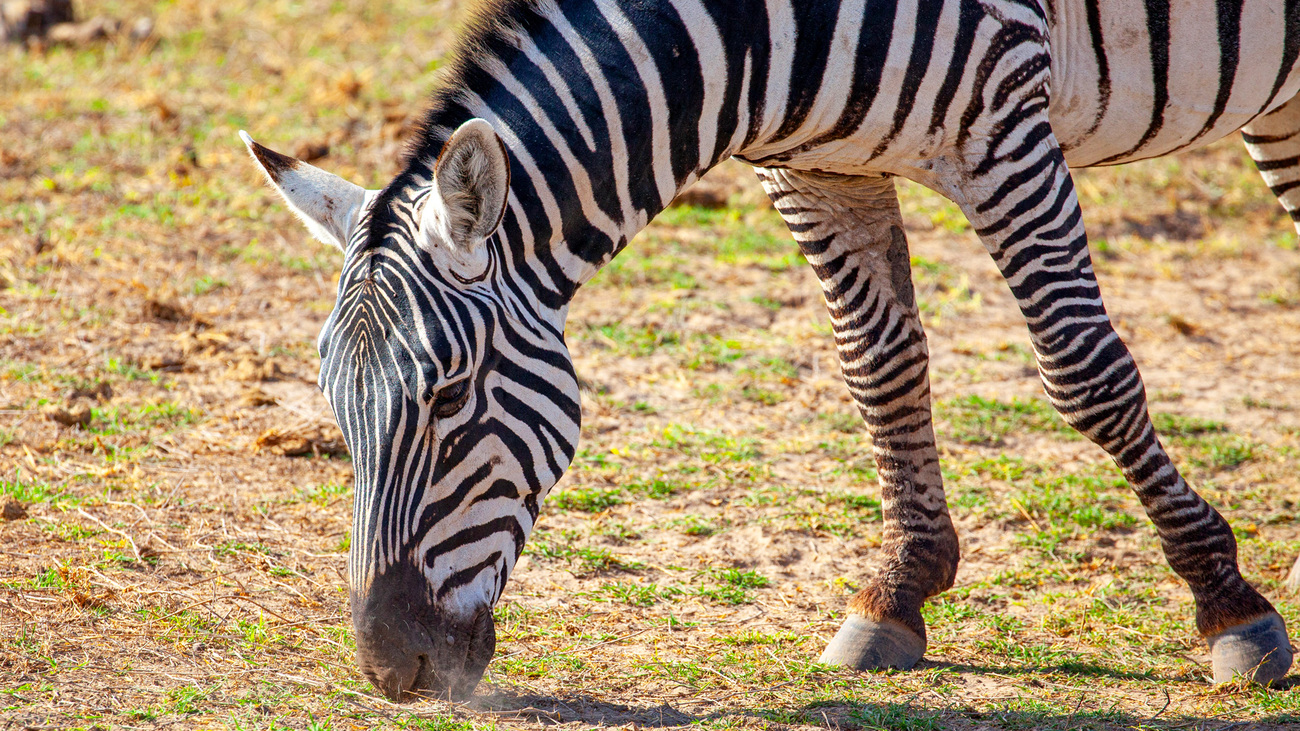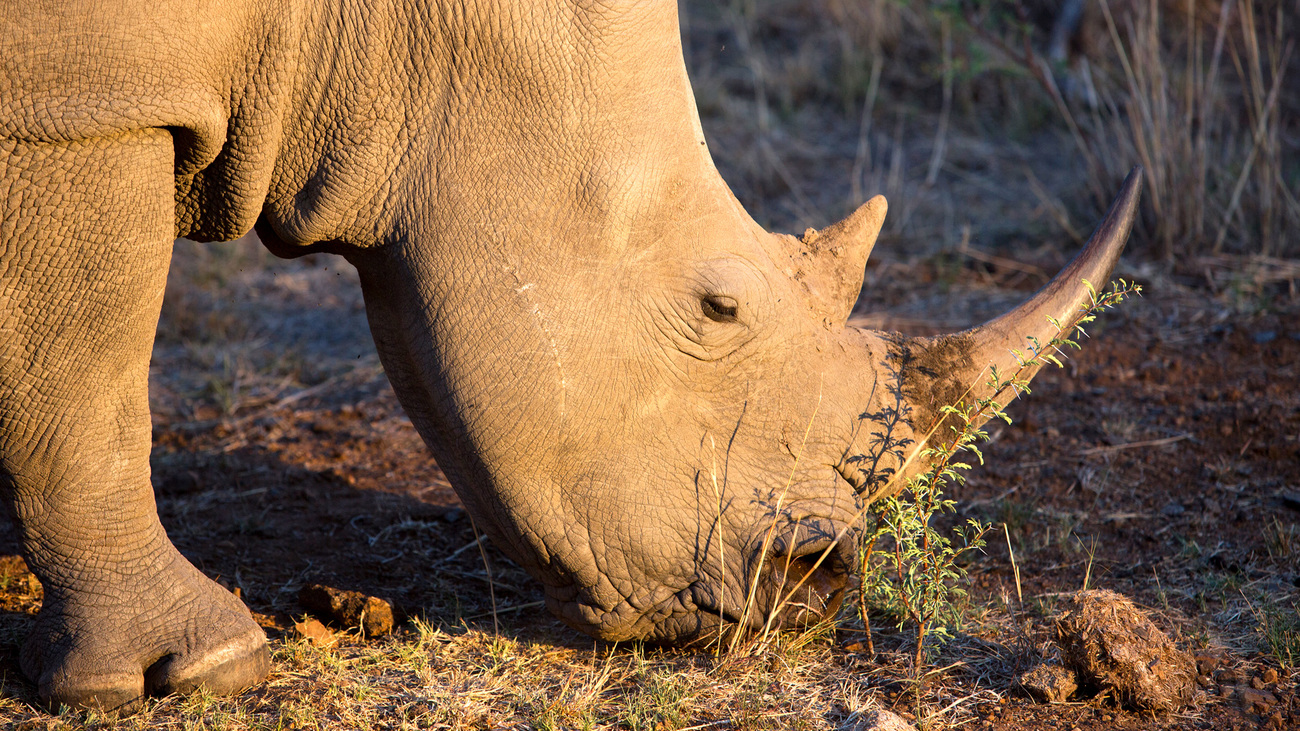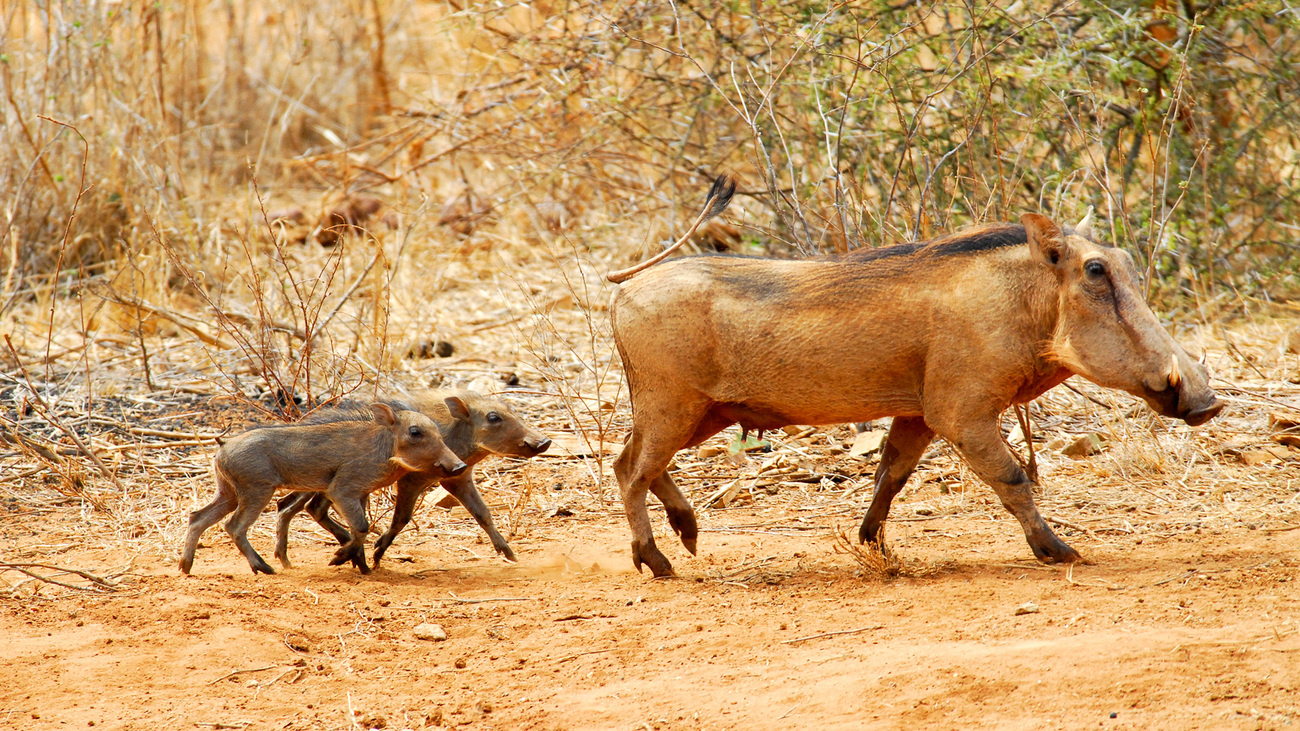Blog
What is Earth Day?
Read moreAmazing animals with hooves: facts and photos
Animals with hooves are called ungulates. All ungulates are mammals, and they walk on the tips of their toes and have a hard, flexible covering that helps to protect those toes—this is what we call hooves. They’re made from keratin, the same material as fingernails and hair, and don’t have nerve endings. The term ‘ungulate’ comes from the Latin ungulatus, meaning ‘hoofed’.
While most ungulates have hooves, there are a few that don’t—the cetaceans, which include whales, dolphins, and porpoises. Evolutionarily, they are most related to these hoofed animals, even though they live in the ocean and don’t have feet.

Animal hooves have the same evolutionary origin as the claws and nails of other animals. Some ungulates have evolved to have just one toe on each foot. Others have two, three, or four toes on each foot. Scientists divide these animals into even-toed ungulates and odd-toed ungulates.
As we’ll see in a moment, hooves can be useful for self-defence, fast running, and even scent-marking.
There are 13 different families of animals with hooves:
IFAW is a conservation and rescue organisation helping animals around the world, including many of these amazing animals with hooves. Learn more about our work or how you can get involved.
Let’s take a closer look at these 13 different types of animals with hooves, where they live, how fast they can run, and their conservation statuses.
Horses, donkeys, and zebras all belong to the family Equidae and its only living genus, Equus. There are three species of zebra:
Horses include the domesticated horse (Equus caballus) and the only living wild horse, Przewalski’s horse (Equus ferus przewalskii).
Domesticated donkeys and wild asses make up the rest of the genus, including the following species and subspecies:
Horses, donkeys, and zebras have a lot in common. They have slender legs, long heads and necks, manes, and long tails. They are also all odd-toed ungulates (along with rhinos and tapirs). Horses, donkeys, and zebras have just a single toe on each foot, while rhinos and tapirs have three. These animals use their hooves and powerful hind legs to kick out at other animals when threatened.
You can find populations of feral horses and donkeys (horses and donkeys that live in the wild but have domesticated ancestors) worldwide. Meanwhile, zebras are only found in Africa. Plains and Grevy’s zebras live in savannahs, shrublands, and grasslands. Mountain zebras live at higher altitudes, in mountainous areas up to 2,000 metres (6,560 feet) above sea level.
According to the IUCN, mountain zebras are listed as vulnerable, plains zebras as near threatened, and Grevy’s zebras as endangered.
Some species of wild horses and donkeys are also under threat. For example, Przewalski's Horse (Equus ferus)—found in China and Mongolia—is endangered. The African wild ass (Equus africanus)—found in Eritrea—is critically endangered. In all cases, hunting and competition with livestock are among the threats these animals face.

Rhinos—the family Rhinocerotidae—live in Africa and Asia. There are five species of rhinoceros:
Like horses, donkeys, and zebras, rhinos are classed as odd-toed ungulates. They have three toes on each of their feet. Their hooves cover the leading edge of each toe, but the bottom of each foot is soft.
While rhinos are some of the largest land mammals on the planet, they can move very quickly. Black rhinos are the speediest—they can reach speeds of 55 kilometres per hour (34 miles per hour) when running away from or charging at predators.
The IUCN lists the white rhino as near threatened and the greater one-horned rhino as vulnerable. The other three species of rhino are all critically endangered. There are just 18 mature Javan rhinos left in the wild and just 30 Sumatran rhinos. Habitat loss, poaching, and the illegal trade in rhino horns all threaten rhinoceroses.
A tapir (a member of the genus Tapirus and family Tapiridae) looks like a pig with a trunk. However, this animal is actually more closely related to horses and rhinos. There are four species of tapir:
● Lowland tapir (Tapirus terrestris)
● Mountain tapir (Tapirus pinchaque)
● Malay tapir (Tapirus indicus)
● Baird’s tapir (Tapirus bairdii)
Like horses, donkeys, zebras, and rhinos, tapirs are odd-toed ungulates. They have four toes on each front foot and three toes on each back foot, and each toe has a hoof.
The Baird’s tapir lives in Central America. The Malay tapir lives in Malaysia, Indonesia, Thailand, and Myanmar. The mountain tapir lives in Colombia, Ecuador, and Peru. The lowland tapir lives across South America. All species live in forest and wetland habitats and are surprisingly good swimmers. They can dive down under the water in search of aquatic vegetation.
The IUCN lists the lowland tapir as vulnerable. All other species are endangered. Hunting and habitat loss are the main threats facing these animals.
The next family of hoofed animals on our list is Camelidae, which includes camels and llamas. There are three species of camel:
● Arabian camel, or dromedary (Camelus dromedarius)
● Bactrian camel (Camelus bactrianus)
● Wild Bactrian camel (Camelus ferus)
The Arabian camel has just one hump, while both types of Bactrian camel have two. They use their humps to store fat, which can be broken down into water and energy during times when sustenance is scarce. Camels can go four to seven days without drinking in severe heat. Non-working camels can survive for 10 months without a drink because they get their water intake from the vegetation they eat.
Camels and llamas are even-toed ungulates, with two toes on each foot. However, they don’t walk on their hooves. Instead, they walk on the broad pad that connects their toes. This pad spreads on uneven ground, like sand, and helps support them as they walk.
Both Arabian camels and Bactrian camels are domesticated. Wild Bactrian camels are classified as critically endangered by the IUCN. Living in the deserts of China and Mongolia, these animals come under threat from hunters.
In addition to camels, the other members of the Camelidae family are domesticated llamas (Lama glama) and alpacas (Lama pacos), alongside their wild relatives—guanacos (Lama guanicoe) and vicuñas (Lama vicugna). Guanacos are classed by the IUCN as least concern, and vicuñas are also classed as least concern. However, guanacos are threatened by poaching, habitat loss, and feral dogs. Vicuñas have also experienced an increase in poaching due to demand for their wool.

Pigs are members of the family Suidae. This includes wild pigs, domestic pigs, wild boars, warthogs, and babirusas.
One of the widest-ranging mammals in the world, wild boars (Sus scrofa) are native to Asia, parts of North Africa, and Europe but can now be found on every continent except Antarctica. They live in a wide variety of habitats, including forests, grasslands, and wetlands. They are the same species as most domesticated pigs, though they may look quite different.
Unlike domesticated pigs, wild boars have tusks that they use for fighting and self-defence. They also have an extra thick layer of skin, known as the shield or shoulder plate, which protects wild pigs when they fight each other for mating rights.
All pigs have four hoofed toes on each foot. They have two larger toes in the middle of each foot that bear most of their weight. The outer two toes are only used when the pig is walking on soft ground.
According to the IUCN, wild boars are classed as least concern. In fact, in some areas they are considered an invasive species because they compete with native wildlife, attack people, and destroy property.
However, some pig species are endangered. The pygmy hog (Porcula salvania), found on the border of India and Bhutan, is classed as endangered and only has about 100 to 250 individuals remaining, primarily due to habitat loss and degradation. The Javan warty pig (Sus verrucosus) is also endangered due to habitat loss. The Visayan warty pig (Sus cebifrons), found in the Philippines, is classed as critically endangered and experiences threats of habitat loss and hunting. The Togian Islands babirusa, found in Indonesia, is endangered and has only about 1,000 individuals left.
Peccaries (the family Tayassuidae) are also known as javelinas or skunk pigs. They are pig-like animals with hooves that live in a range of habitats, from arid scrublands to rainforests, of the southwestern US, Central America, and South America. There are three species of peccary:
Peccaries have large heads, stocky bodies, and short, stubby legs. They also have hoofed feet, with four toes on the front feet and two toes on the back feet, making them even-toed ungulates. Despite their stocky appearance, peccaries can run fast and can reach up to 55 kilometres per hour (35 miles per hour).
The collared peccary is classed as least concern by the IUCN, the Chacoan peccary is endangered, and the white-lipped peccary is vulnerable. These animals are threatened by hunting and deforestation in their habitats.
Chevrotains, also known as mouse-deer (the family Tragulidae), are small hoofed mammals that live in Southeast Asia, India, and Africa. There are ten species of chevrotain in total. These include:
Chevrotains stand at around 30 centimetres (12 inches) tall at the shoulder, making them the smallest hoofed animals in the world. Like pigs, chevrotains have four toes on each foot. They are shy and solitary creatures, with one species—the silver-backed chevrotain—only photographed in the wild for the first time in 2019.
Most chevrotain species are listed by the IUCN as of least concern. However, the balabac mouse deer is considered endangered. This chevrotain can be found in the Philippines, where it faces the threat of poaching for its meat. Some chevrotains are also taken from the wild and sold to local zoos or private collectors.
Pronghorns (Antilocapra americana) are a type of even-toed ungulate living in the shrublands and grasslands of North America. This animal isn’t technically an antelope, but it is sometimes called the American antelope or the prairie antelope. They are the only surviving members of the family Antilocapridae.
Pronghorns have two toes on each foot and are very fast runners. They can reach speeds of up to 70 kilometres per hour (40 miles per hour). They can also leap up to six metres (20 feet) in one bound when running away from predators like bobcats and coyotes.
Pronghorns are herbivores and a type of ruminant. Like most other even-toed ungulates, they chew cud with the help of a four-chambered stomach.
According to the IUCN, pronghorns are classified as least concern. However, competition with livestock, infrastructure development, and habitat fragmentation pose a threat to the species.

There are 55 species of deer in the Cervidae family. These include, among others:
All deer are even-toed ungulates, with two large and two small hooves on each foot. In most deer species, only the males have antlers. Caribou, also known as reindeer, are the only species in which both males and females have antlers. Growing antlers takes a lot of energy, so deer are selective feeders who prefer vegetation that has a high protein content. This includes plants like herbs, lichens, buds, fruit, and young grasses.
Many deer species are thriving, particularly those living in protected areas. But other deer aren’t so lucky. The IUCN lists caribou as vulnerable, the Persian fallow deer (Dama mesopotamica) as endangered, the large-antlered muntjac (Muntiacus vuquangensis) as critically endangered, and Pere David’s deer (Elaphurus davidianus) as extinct in the wild. These and other deer species are threatened by overhunting and habitat loss.
Musk deer—members of the genus Moschus—are the only living members of the family Moschidae. Though they’re called deer, they aren’t ‘true’ deer like the Cervidae family. They are more closely related to antelopes, cows, sheep, and goats. Musk deer primarily live in South Asia, including in the Himalayas.
Musk deer don’t have antlers. They stand about 53 to 80 centimetres (20.8 to 31.4 inches) tall at the shoulder and weigh 10 to 18 kilograms (22 to 40 pounds). Male musk deer secrete a scent, most likely to attract mates, which makes them prized for perfumes and traditional medicine.
All seven species of musk deer are classed as endangered, except for the Siberian musk deer, which is vulnerable. The primary threats to musk deer include poaching for their scent glands and habitat loss due to forest clearing.

Despite their difference in size, giraffes and okapi are each other’s closest relatives, as the only extant members of the family Giraffidae. Giraffes (Giraffa camelopardalis), found in forest, savannah, and shrubland habitats in Africa, are the world’s tallest land animals and the largest ruminant on Earth. They can reach heights of up to 5.5 metres (18 feet) and have legs that can measure up to 1.8 metres (six feet) long.
To support their huge size and weight, giraffes have huge hoofed feet, each with a diameter of 30 centimetres (11 inches). This large surface area helps giraffes walk on sandy or uneven terrain.
The IUCN lists giraffes as vulnerable. They are threatened by habitat loss, illegal hunting, and—in some areas—civil unrest.
The okapi (Okapia johnstoni) is an endangered animal that lives in the Congo rainforest. These animals have zebra-like black and white stripes on their legs.
Like the giraffe, the okapi has a long, dark tongue that it uses to strip leaves from trees. Like other ruminants, it has four stomachs that help it digest its vegetarian diet.
Okapi hooves are used in a variety of different ways. Their hooves have scent glands, which okapis use to mark their territory. Female okapi also beat their hooves on the ground to warn off predators and protect their young.
According to the IUCN, okapi are endangered. They only live in the Ituri Rainforest in the Democratic Republic of Congo. Here, they are at risk of habitat loss due to logging and human settlement. Hunting for their meat and skins is also a problem.

Hippopotamuses (family Hippopotamidae), including true hippos (Hippopotamus amphibius) and pygmy hippos (Choeropsis liberiensis), are ungulates with four toes on each foot. Their hooves are different from other ungulates, as they are more like fingernails. Their feet are webbed, which helps them swim.
Hippos are the closest living relatives to cetaceans (whales, dolphins, and porpoises). They are found in sub-Saharan Africa’s wetlands, in and around lakes, rivers, and swamps. The pygmy hippo is found only in West Africa and is endangered, with fewer than 2,500 individuals remaining. Hippopotamuses are classed as vulnerable, facing threats of poaching, habitat loss, and human-wildlife conflict.

Bovidae is the ungulate family that contains both cattle and antelopes. This broad family contains 143 living species.
Cattle are domestic bovines, typically of the species Bos taurus. These domestic cows are one of the most common farm animals around the world. They were domesticated around 10,500 years ago from their wild ancestors, believed to be the auroch.
There are many different breeds of cattle. Some have been bred primarily for their meat, some for their milk, and some as dual-purpose cattle. All cows are even-toed ungulates. They have cloven hooves (a hoof split into two toes).
Antelopes are hoofed animals with hollow horns. They are often mistaken for deer. However, deer have branched antlers that they shed and grow each year, and antelopes have a set of permanent, single-pronged horns.
There are many different types of antelopes living across Africa and Asia. Many species live in open grassland, but some antelopes live in rainforests and wooded areas. Some species of antelope include:
All antelopes have hooves with two toes, but there is some variation in shape from species to species. For example, lechwe, which spend a lot of time in water, have long, pointed hooves that help support them on soft ground.
There are around 91 species of antelope. Some—like the dama gazelle and the hirola—are listed as critically endangered on the IUCN Red List. Primary threats to antelopes include habitat loss, competition with livestock, and poaching.
Want to help support wildlife conservation and rescue around the world?
Our work can’t get done without you. Please give what you can to help animals thrive.
Unfortunately, the browser you use is outdated and does not allow you to display the site correctly. Please install any of the modern browsers, for example:
Google Chrome Firefox Safari